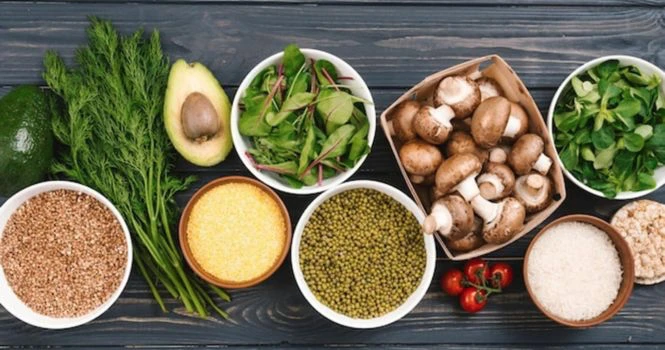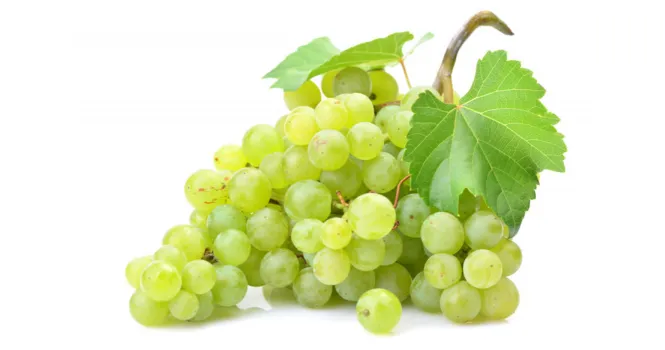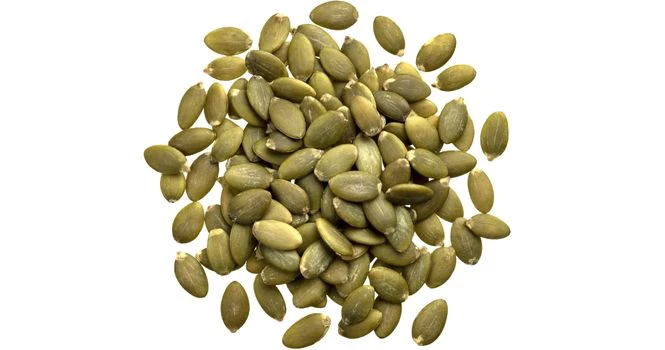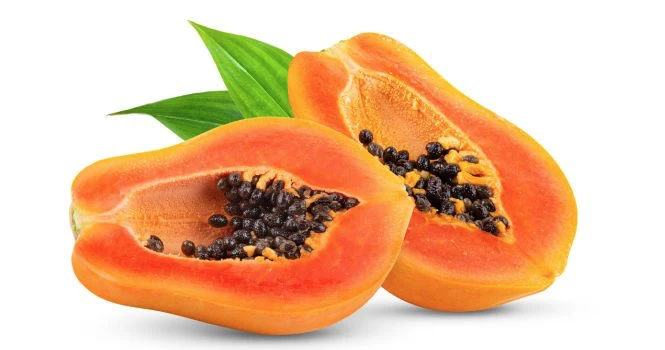Sources of Protein for Vegetarians

While plant proteins may lack one or more amino acids, it’s important to combine different plant sources of protein to complete the ammonia acid profile required by the body. Before going into plant sources of Proteins, let’s see the difference between animal and plant based protein.
Differences between Animal Protein and Plant Protein
| Aspect | Animal Protein | Plant Protein |
| Source | Meat, fish, poultry, eggs, dairy | Legumes, grains, nuts, seeds, vegetables |
| Amino Acid Profile | Complete (all essential amino acids) | Often incomplete (may lack some essential amino acids) |
| Digestibility | Generally higher | Generally lower |
| Fat Content | Often higher in saturated fats | Typically lower in saturated fats, higher in unsaturated fats |
| Cholesterol | Present | Absent |
| Fiber | Absent | Present |
| Vitamins & Minerals | Rich in B vitamins, iron, zinc | Rich in vitamins A, C, E, K, folic acid, potassium, magnesium |
| Environmental Impact | Higher (greater resource use, emissions) | Lower (less resource use, emissions) |
| Ethical Considerations | Animal welfare concerns, sustainability | More ethical, sustainable |
Click Here for the List of Protein for Vegans
Which type of Protein do Vegetarian Food Sources Lack?
Amino Acid + Amino Acid = Protein
Vegetarian food sources, which primarily consist of plant-based proteins, often lack one or more essential amino acids.
The most common limiting amino acids in plant proteins are lysine, methionine, and tryptophan. Here are some examples:
1. Lysine: Grains, such as wheat, rice, and corn, are generally low in lysine. However, legumes like beans, lentils, and chickpeas are good sources of lysine.
2. Methionine: Legumes tend to be lower in methionine, while grains, nuts, and seeds usually have higher levels of this amino acid.
3. Tryptophan: Some plant-based protein sources may also be lower in tryptophan, but this is less common compared to lysine and methionine.
It is important to note that while individual plant-based protein sources may lack one or more essential amino acids, consuming a variety of plant proteins can provide a complete amino acid profile.
This practice is known as protein complementation, where different plant-based proteins are combined to make up for their respective limiting amino acids.
For example, combining grains and legumes, such as rice and beans or peanut butter on whole-grain bread, can provide a complete protein source with all the essential amino acids.
List of sources of Protein for Vegetarians
Note: Protein requirements can vary based on factors such as age, sex, and activity level. The Recommended Dietary Allowance (RDA) for protein is 0.8 grams of protein per kilogram of body weight for adults.
For a 70 kg person, this would be approximately 56 grams of protein per day. However, individual needs may differ.
| Food Source | Serving Size | Protein Content (grams) | Protein Requirement for 70kg Person (56g/day) |
| Legumes | 1 cup cooked | 12-18 | 3-5 servings |
| Tofu | 3.5 oz (100g) | 8-15 | 4-7 servings |
| Tempeh | 3.5 oz (100g) | 18-20 | 3 servings |
| Seitan | 3.5 oz (100g) | 21-25 | 2-3 servings |
| Edamame | 1 cup | 18 | 3 servings |
| Quinoa | 1 cup cooked | 8 | 7 servings |
| Amaranth | 1 cup cooked | 9 | 6 servings |
| Buckwheat | 1 cup cooked | 6 | 9-10 servings |
| Chia seeds | 2 Tbsp | 4 | 14 servings |
| Hemp seeds | 3 Tbsp | 10 | 6 servings |
| Pumpkin seeds | 1/4 cup | 9 | 6 servings |
| Sunflower seeds | 1/4 cup | 6 | 9-10 servings |
| Almonds | 1/4 cup | 7 | 8 servings |
| Peanuts | 1/4 cup | 9 | 6 servings |
| Cashews | 1/4 cup | 5 | 11-12 servings |
| Walnuts | 1/4 cup | 4 | 14 servings |
| Spirulina | 1 Tbsp | 4 | 14 servings |
| Nutritional yeast | 2 Tbsp | 8 | 7 servings |
| Ezekiel bread | 1 slice | 4 | 14 servings |
| Whole grains | 1 cup cooked | 3-6 | 9-19 servings |
| Greek yogurt | 1 cup | 12-18 (lacto-vegetarian) | 3-5 servings |
| Cottage cheese | 1 cup | 24 (lacto-vegetarian) | 2-3 servings |
| Cheese | 1 oz | 6-8 (lacto-vegetarian) | 7-10 servings |
| Eggs | 1 large egg | 6 (ovo-vegetarian) | 9-10 servings |
| Plant-based milks | 1 cup | 4-8 | 7-14 servings |
Frequently Asked Questions
What vegetarian foods are high in protein?
The list is the above tabular column with grams of protein in each source.
The list involves Legumes, tofu, tempeh, seitan, edamame, quinoa, cottage cheese, Greek yogurt, eggs, and various seeds and nuts.
How to get 150 grams of protein a day vegetarian?
Combine high-protein plant-based foods like legumes, tofu, tempeh, seitan, and quinoa, along with dairy and eggs if you are a lacto-ovo vegetarian. You may also consider using protein supplements like plant-based protein powders.
How can vegetarians get 100 grams of protein a day?
Include a variety of protein-rich vegetarian foods like legumes, tofu, tempeh, seitan, edamame, dairy, and eggs if you are a lacto-ovo vegetarian. You can also add protein-dense seeds, nuts, and whole grains.
How do vegetarians get most of their protein?
Vegetarians get most of their protein from legumes, dairy, eggs, tofu, tempeh, seitan, nuts, seeds, and whole grains.
What is a quick source of vegetarian protein?
Quick vegetarian protein sources include Greek yogurt, cottage cheese, eggs, edamame, nuts, seeds, and ready-to-eat tofu or tempeh products.
What are 20 protein foods?
Legumes, tofu, tempeh, seitan, edamame, quinoa, amaranth, buckwheat, chia seeds, hemp seeds, pumpkin seeds, sunflower seeds, almonds, peanuts, cashews, walnuts, Greek yogurt, cottage cheese, cheese, and eggs.
What are 3 vegetarian protein options?
Tofu, lentils, and quinoa.
Which dal is high in protein?
Rajma (kidney beans) and Masoor Dal (red lentils) have the highest protein content, both containing approximately 9 grams of protein per 100 grams cooked.
| Dal (Lentil) | Protein Content (g/100g cooked) | Servings for 56g protein |
| Moong Dal (Split Green Gram) | 7.5 | 7-8 servings |
| Masoor Dal (Red Lentils) | 9 | 6-7 servings |
| Toor Dal (Pigeon Peas) | 7 | 8 servings |
| Chana Dal (Split Chickpeas) | 8.6 | 6-7 servings |
| Urad Dal (Split Black Gram) | 7.4 | 8 servings |
| Rajma (Kidney Beans) | 8.7 | 6-7 servings |
| Lobia (Black-Eyed Peas) | 6.7 | 8-9 servings |
| Kabuli Chana (Chickpeas) | 7.5 | 7-8 servings |
Which food has the highest protein?
Seitan, a wheat gluten-based protein source, has one of the highest protein contents among vegetarian foods.
How to eat 70g of protein a day vegetarian?
Consume a combination of protein-rich vegetarian foods, such as legumes, tofu, tempeh, seitan, dairy, eggs, whole grains, nuts, and seeds, to meet your protein target.
Which Indian food has more protein?
Paneer, dals (lentils), chickpeas, and various legume-based dishes are good sources of protein in Indian cuisine.
Is there any fruit with protein?
Yes, some fruits contain small amounts of protein, such as avocado, guava, and dried apricots.
Is paneer rich in protein?
Yes, paneer is a good source of protein, with about 18-20 grams of protein per 100 grams.
What are six vegetarian food sources for protein?
Legumes, tofu, tempeh, seitan, Greek yogurt, and eggs.
How do vegetarians get B12?
Vegetarians can obtain B12 from fortified foods like cereals, plant-based milks, and nutritional yeast, as well as dairy products and eggs for lacto-ovo vegetarians. They can also take B12 supplements.
How can I increase my protein intake?
To increase your protein intake, consider the following strategies:
1. Prioritize protein-rich foods at each meal: Incorporate legumes, tofu, tempeh, seitan, dairy, eggs, nuts, seeds, and whole grains into your meals.
2. Choose high-protein snacks: Opt for Greek yogurt, nuts, seeds, or protein bars as snacks.
3. Combine complementary proteins: Pair plant-based protein sources that complement each other’s amino acid profiles, such as legumes with grains, to create complete proteins.
4. Use protein powders: Add plant-based or whey protein powders to smoothies, oatmeal, or recipes to boost your protein intake.
5. Plan your meals: Plan your meals in advance to ensure you include enough protein sources throughout the day.
6. Monitor portion sizes: Be mindful of portion sizes to ensure you are consuming adequate amounts of protein-rich foods.
7. Explore new recipes: Experiment with new protein-rich recipes and ingredients to diversify your protein intake.
![]()












